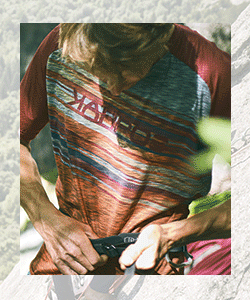5 Pro Climbers Training Tips That Can Help Anyone Improve

You’re a sport climber or boulderer operating in the strong middle grades. You have no desire to compete and simply want to send cool projects and go on cool climbing trips. You have familiar, set-piece training routines, yet things may have stagnated. If you’re seeking fresh ideas and inspiration to help bust you out of a plateau … look no further than the approach of an Olympic-team climber! 5 Pro Climbers Training Tips That Can Help Anyone Improve
5 Pro Climbers Training Tips That Can Help Anyone Improve. At a glance, you’d think that these guys and girls might climb on a different planet than you do, yet a closer inspection may surprise you. The exercises and drills they use are relevant to others for transforming performance and enhancing your enjoyment of regular crag and gym climbing.
1. Build to a peak
Most climbers want to be on good form year-round, yet the Olympic Pro Climbers sacrifices performance at certain times in order to be at peak performance for the competition season. This approach applies if you want to climb your very best on a particular trip or send a project. Start by taking some time out (eg 1 – 2 weeks), and then slowly and progressively escalate your training volume and intensity (over a period of, say, 4 – 12 weeks). Finally, come off the gas and allow some extra recovery, to reach a peak just before that planned trip or big send.

2. Phase your training like Pro Climbers
There are a multitude of approaches for adding structure to your training. But a classic formula adopted by many Olympic teams and Pro Climbers is to split your overall plan into themed phases. Such as: strength, strength endurance, speed and skills, aerobic endurance, and so on.
Each phase follows the theme, although you still maintain other aspects by training them to a lesser degree. For example, if you want to focus on strength, make that 60 percent, then 20 percent on speed, and 20 percent on endurance. A popular strategy also used by Olympic pro climbers is to follow certain themes for longer phases such as 4-6 weeks, a strategy known as linear periodization, during the off-season; and for shorter phases or non-linear periodization, for something like 1-3 weeks during the performance season.

3. Rotate your training.
Pro Climbers juggle an enormous list of performance variables. If you try to work on everything at once, things get diluted, and you risk mental and physical burnout. Yet if you work on things individually, you may never tick off the list! A great system is to focus on, say, three things per session. For example, start with strength-based boulder problems, move onto slabs to give your arms a rest, and finish with some power-endurance laps on the circuit board. Athletes like Adam Ondra will usually do things this way.
4. Build supportive strength.
If you hit the hangboards and campus boards hard and regularly without doing much in the way of supportive strength conditioning, injury will probably strike before long. The Olympic climber is meticulous when it comes to supportive routines, which train the antagonist (opposition) muscles to help prevent injury. For most of us, the key is to change the way you see this type of training and to regard it as fun rather than a chore. Not only will supportive training make you climb harder in the long run, you will generally feel more robust and athletic as a climber. Watch climbers like Alex Megos in action and you’ll see what I mean!

5. Fix up your diet like pro climbers
Thankfully, you don’t need to eat as strictly as an Olympic athlete, but you can certainly take inspiration from that approach. There’s so much mental, physical and emotional value in ditching the sugary snacks and junk calories and putting quality fuel in the machine. You can even take things to the next level by synching your nutrition with your training. This doesn’t have to be a big deal: Simply take more protein when training strength and more carbs to fuel endurance sessions.
Nutrition plans should always be personalized, meaning that you should experiment and learn from your own feedback, and adapt generic plans so that they work better for you. In the case of allergies and intolerances, consult a sports nutritionist or dietitian. Go on, do it now. You know it makes sense!










